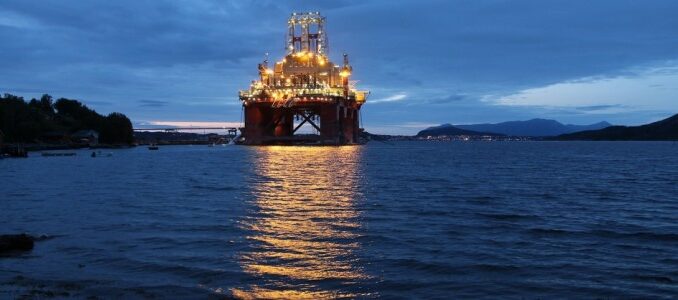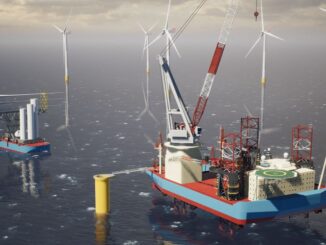
Norway’s energy giant Equinor, a major player in the global oil and gas sector, released its third-quarter 2025 earnings on October 29, revealing a challenging period marked by declining oil prices that weighed heavily on profitability. The company reported a net loss of $204 million, a stark contrast to the $2.285 billion net income in the same quarter last year. Adjusted earnings per share came in at $0.37, falling short of analyst expectations which ranged around $0.57 to $0.62.
This miss underscores the vulnerability of upstream-focused companies to commodity price swings, even as Equinor demonstrated operational resilience with record production levels.
Financial Highlights:
A Mixed Bag Amid Price PressuresEquinor’s total revenues for Q3 reached $26.05 billion, a modest 2.4% increase year-over-year, driven primarily by higher production volumes and elevated U.S. gas prices.
However, adjusted operating income declined 10% to $6.21 billion, while adjusted net income plummeted 57% to $932 million.
The downturn was largely attributed to lower realized liquids prices, which averaged $64.9 per barrel—down 12% from $74 per barrel in Q3 2024.
European gas prices held relatively steady at $11.4 per mmbtu, providing some offset.
Got Tax Planning Questions?
Impairments totaling $754 million further eroded results, stemming from revised lower price assumptions and challenges with non-operated U.S. offshore assets and international holdings held for sale.
On a positive note, cash flow from operations after taxes paid stood strong at $5.33 billion, supporting Equinor’s commitment to shareholder returns. The company declared a quarterly dividend of $0.37 per share and is on track to complete a $5 billion share buyback program for 2025, with the final tranche of up to $1.266 billion starting October 30.
Total capital distribution for the year is expected to hit around $9 billion.
Operating expenses rose 16% to $3.26 billion, influenced by currency effects, higher transportation costs, and one-off bookings related to a U.S. asset ceasing production.
Despite these headwinds, Equinor maintained a robust balance sheet, with net debt to capital employed at 12.2%—a slight improvement from the prior quarter.
The North Sea: Equinor’s Backbone and Growth Engine
The Norwegian Continental Shelf (NCS), encompassing the North Sea, remains central to Equinor’s operations, accounting for approximately 67% of its total equity production in Q3.
Production on the NCS surged 9% year-over-year to 1,422 thousand barrels of oil equivalent per day (mboe/d), fueled by standout performance at the Johan Sverdrup field, which experienced minimal downtime, and contributions from new developments like Johan Castberg and Halten East.
Overall group production hit 2,130 mboe/d, up 7% from the previous year, with liquids output rising 6% and gas 9%.
The North Sea’s mature fields continue to deliver efficiently, bolstered by Equinor’s infrastructure-led exploration strategy. In Q3 alone, the company completed 18 offshore wells on the NCS, yielding seven commercial discoveries—one of which is already producing via the Åsgard A platform.
Recent projects, such as the Fram Sør development and a new oil and gas find near the Troll field, highlight the region’s ongoing potential.
These tie-backs to existing infrastructure ensure cost-effective growth, reinforcing Equinor’s role as Europe’s reliable energy supplier.
Expansion Plans: Betting on Oil, Gas, and Transition
Looking ahead, Equinor is poised for continued production expansion, targeting 4% growth for full-year 2025 compared to 2024.
Organic capital expenditures are guided at $13 billion, with a focus on high-value projects.
In the North Sea, the company is advancing Johan Sverdrup Phase 3, which includes platform modifications and eight new wells, expected to add 40-50 million barrels of oil equivalent (boe) with production ramping up in Q4 2025.
Additional initiatives include Barents Sea exploration drilling starting late 2025 or early 2026, and a new gas export solution from the North Sea platform.
Internationally, the Bacalhau field in Brazil achieved first oil in October, with recoverable reserves exceeding 1 billion boe, set to boost earnings through 2030.
U.S. production jumped 29% to 441 mboe/d, thanks to onshore acquisitions and offshore wells.
On the energy transition front, renewables power generation grew 34% to 0.91 TWh, driven by Dogger Bank A and new onshore assets, with a 50% cost reduction achieved year-to-date.
However, Equinor halted early-phase electrification projects at Snorre and Halten due to high costs, opting to mature others like Grane-Balder.
The Northern Lights CO₂ storage facility also became operational, marking a milestone in carbon capture.The Midstream, Marketing, and Processing segment anticipates average quarterly adjusted operating income of $400 million moving forward, reflecting market shifts and divestments.
What Investors Should Watch For
For investors eyeing Equinor, the Q3 results highlight both risks and opportunities in a volatile energy landscape. Key positives include disciplined cost control—keeping unit costs in the top quartile despite inflation—and a commitment to returns, with the stock potentially undervalued by over 50% based on discounted cash flow analysis.
The North Sea’s growth trajectory and international expansions like Bacalhau provide a buffer against price dips, while renewables and CO₂ initiatives position the company for the energy transition.
However, sensitivity to oil prices remains a core risk; sustained lows below $65 per barrel could pressure margins further. Watch for geopolitical factors, such as U.S. trade policies, and regulatory changes in high-tax regions like the UK and Norway.
Investors should monitor Q4 tax payments (three installments expected) and production regularity, with maintenance projected to trim 30 mboe/d annually.
Equinor’s strategic pivot toward low-carbon solutions, including its stake in Ørsted for offshore wind, could yield long-term upside, but execution risks loom amid cost pressures.
In summary, while lower oil prices dented Q3 profits, Equinor’s operational strength and expansion pipeline suggest resilience. Shares dipped post-earnings, but the company’s cash-generative model and shareholder focus make it a compelling hold for those betting on energy demand recovery.
Got Questions on investing in oil and gas?
ENB Top News
ENB
Energy Dashboard
ENB Podcast
ENB Substack







